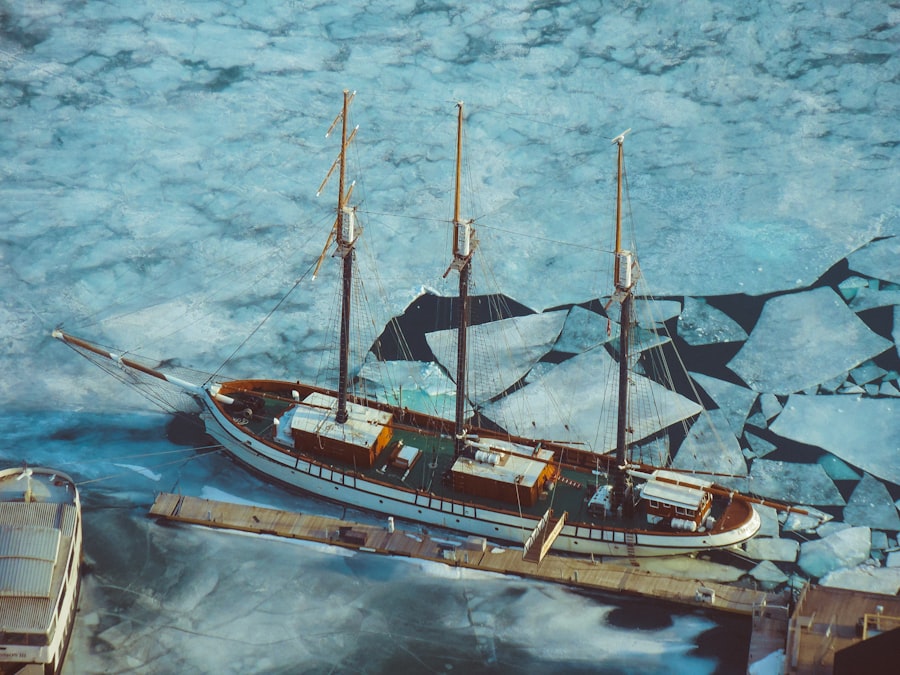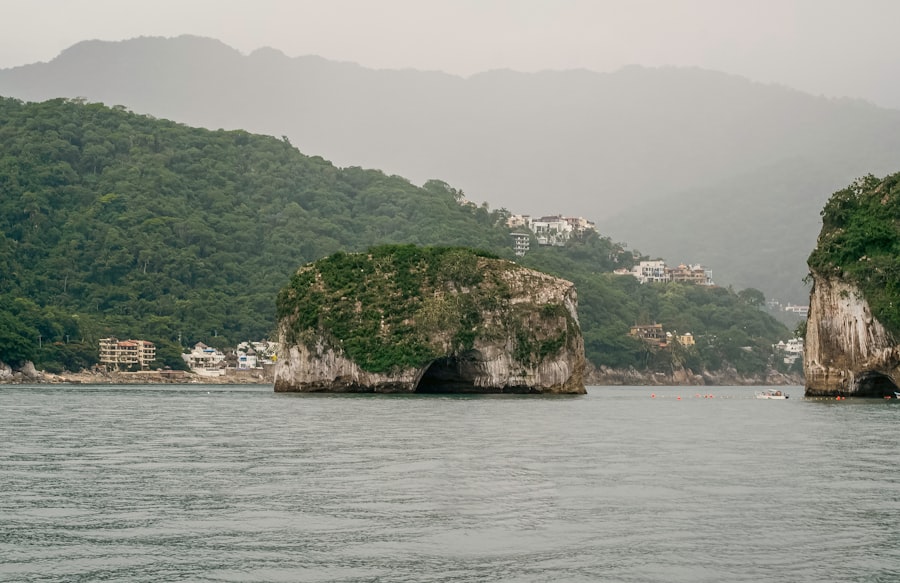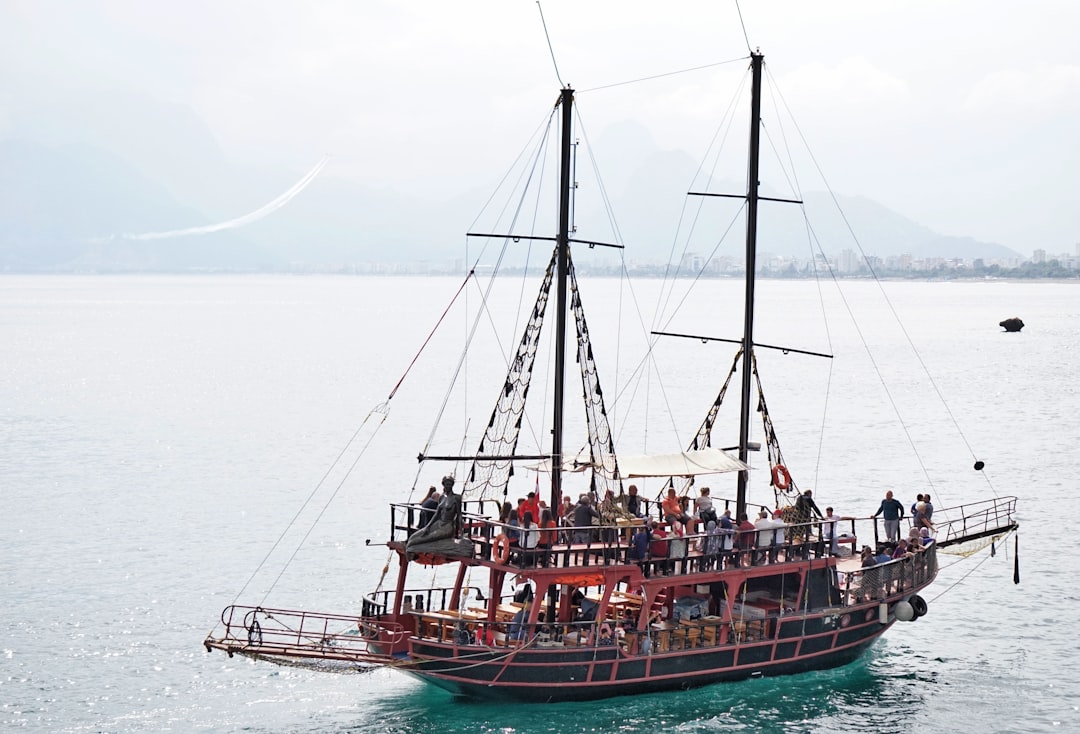The Drake Passage, a body of water situated between the southern tip of South America and Antarctica, is renowned for its tumultuous seas and unpredictable weather. This narrow stretch of ocean, measuring approximately 800 kilometers (500 miles) wide, serves as a critical conduit for maritime traffic between the Atlantic and Pacific Oceans. Named after the English explorer Sir Francis Drake, who navigated these waters in the late 16th century, the passage has long been a focal point for explorers, scientists, and adventurers alike.
Its unique geographical position not only makes it a vital route for shipping but also a significant area for ecological research and wildlife observation. The passage is characterized by its fierce currents and high winds, which can create challenging conditions for even the most seasoned mariners. The confluence of the cold waters from the Southern Ocean and the warmer waters from the Atlantic creates a dynamic marine environment that is both beautiful and treacherous.
As such, the Drake Passage has become a symbol of adventure and exploration, drawing those who seek to test their limits against nature’s formidable forces. For centuries, it has been a gateway to the Antarctic, offering glimpses into one of the last great wildernesses on Earth.
Key Takeaways
- The Drake Passage is a treacherous body of water located between South America’s Cape Horn and the South Shetland Islands of Antarctica.
- Chinese exploration in the Drake Passage dates back to the early 15th century, with expeditions led by Admiral Zheng He.
- Navigating the Drake Passage presents numerous challenges, including strong winds, rough seas, and icebergs.
- Proper preparation and planning are essential for a successful journey through the Drake Passage, including choosing the right vessel and timing the trip carefully.
- Chinese explorers have encountered diverse wildlife and natural wonders in the Drake Passage, including penguins, whales, and stunning ice formations.
The History of Chinese Exploration in the Drake Passage
Chinese exploration of the Drake Passage is a lesser-known chapter in the annals of maritime history, yet it is rich with intrigue and ambition. During the Ming Dynasty, particularly under the leadership of Admiral Zheng He in the early 15th century, China embarked on a series of maritime expeditions that extended far beyond its traditional trade routes. While Zheng He’s voyages primarily focused on Southeast Asia and the Indian Ocean, they laid the groundwork for future explorations that would eventually reach the southernmost parts of the globe.
In subsequent centuries, as China’s interest in global trade expanded, so too did its maritime ambitions. The Drake Passage became a point of interest for Chinese navigators seeking new trade routes and opportunities. Although direct records of Chinese expeditions through this specific passage are sparse, it is believed that Chinese sailors ventured into these waters during their quests for new resources and trade partners.
The passage’s strategic importance as a link to Antarctica and beyond would not have gone unnoticed by those keen on expanding their influence across the seas.
Challenges of Navigating the Drake Passage

Navigating the Drake Passage presents a myriad of challenges that can test even the most experienced sailors. The region is notorious for its unpredictable weather patterns, which can shift rapidly from calm to stormy within a matter of hours. High winds, often exceeding 50 knots, can whip up towering waves that reach heights of over 30 feet, creating perilous conditions for vessels attempting to traverse this stretch of water.
These formidable natural forces have earned the Drake Passage its reputation as one of the most treacherous maritime routes in the world. In addition to the weather, navigators must contend with strong ocean currents that can complicate navigation and increase travel time. The convergence of different water masses in this area creates a dynamic environment where currents can change direction unexpectedly.
For those unfamiliar with these waters, this can lead to disorientation and potential hazards. Furthermore, icebergs and sea ice pose additional risks during certain times of the year, making careful planning and real-time adjustments essential for safe passage.
Preparation and Planning for the Journey
| Preparation and Planning for the Journey | Metrics |
|---|---|
| Number of days spent on planning | 10 days |
| Number of team meetings held | 5 meetings |
| Number of contingency plans created | 3 plans |
| Number of resources allocated | 20 resources |
Preparation for a journey through the Drake Passage requires meticulous planning and foresight. Sailors must equip their vessels with appropriate safety gear, including life rafts, emergency beacons, and communication devices capable of functioning in extreme conditions. Additionally, thorough knowledge of weather patterns and ocean currents is crucial; many navigators rely on advanced meteorological data to chart their course effectively.
This preparation not only enhances safety but also increases the likelihood of a successful crossing. Moreover, understanding the unique challenges posed by the Drake Passage necessitates extensive training for crew members. Those embarking on this journey must be well-versed in emergency protocols and navigation techniques specific to these waters.
Many expeditions include drills to prepare for potential emergencies, ensuring that all crew members are ready to respond swiftly should unforeseen circumstances arise. This level of preparation reflects not only a commitment to safety but also an acknowledgment of the passage’s formidable reputation.
Chinese Explorers’ Experience in the Drake Passage
The experiences of Chinese explorers in the Drake Passage are marked by both triumphs and tribulations. While historical records may not provide extensive details about specific voyages through this region, anecdotal evidence suggests that Chinese sailors faced numerous obstacles during their expeditions. The harsh weather conditions and unpredictable seas would have tested their skills and resilience as they navigated these challenging waters.
They employed traditional navigation techniques alongside innovative methods learned from other cultures encountered during their travels. This blending of knowledge allowed them to make significant strides in their understanding of maritime navigation, ultimately contributing to their success in reaching distant shores.
The stories of these explorers serve as a testament to human determination in the face of nature’s challenges.
Wildlife and Natural Wonders of the Drake Passage

The Drake Passage is not only known for its challenging navigation but also for its stunning natural beauty and rich biodiversity. The waters teem with marine life, including various species of whales, seals, and seabirds that thrive in this unique ecosystem. The nutrient-rich waters support an abundance of krill, which serves as a vital food source for many marine animals.
Observing these creatures in their natural habitat is one of the highlights for those who venture into this remote region. In addition to its wildlife, the Drake Passage boasts breathtaking landscapes characterized by rugged coastlines and dramatic ice formations. Glaciers calve into the sea, creating spectacular displays as massive chunks of ice break away and float into the ocean.
The stark contrast between the icy waters and the vibrant colors of marine life creates a visual feast for explorers and researchers alike. This natural wonderland serves as both a reminder of Earth’s beauty and a call to protect these fragile ecosystems from human impact.
Cultural and Historical Significance of the Drake Passage for Chinese Explorers
For Chinese explorers, the Drake Passage holds cultural and historical significance that extends beyond mere navigation. It represents a bridge between East and West, symbolizing China’s aspirations to engage with distant lands and cultures. The passage’s strategic location made it an essential route for trade and exploration during periods when China sought to expand its influence across global waters.
Moreover, the experiences of Chinese sailors navigating these waters contributed to a broader understanding of maritime culture within China itself. As they encountered diverse peoples and customs along their journeys, they brought back knowledge that enriched Chinese society’s perception of the world beyond its borders. This exchange of ideas fostered a spirit of curiosity and exploration that would resonate through generations.
Navigation Techniques and Tools Used by Chinese Explorers
Chinese explorers employed a variety of navigation techniques and tools that reflected their deep understanding of maritime travel. Traditional methods included celestial navigation, where sailors used stars to guide their way across vast oceans. This ancient practice required extensive knowledge of astronomy and an ability to read the night sky—a skill honed over centuries by generations of mariners.
In addition to celestial navigation, Chinese sailors utilized compasses and rudimentary maps to aid their journeys. The magnetic compass, which was developed during the Song Dynasty, revolutionized navigation by providing reliable directional guidance even in overcast conditions. These tools allowed explorers to chart courses with greater accuracy than ever before, enabling them to venture into uncharted territories like the Drake Passage with increased confidence.
Impact of Chinese Exploration on the Drake Passage
The impact of Chinese exploration on the Drake Passage extends beyond individual voyages; it has shaped broader maritime practices and international relations over time. As Chinese sailors ventured into these waters, they contributed to a growing body of knowledge about navigation techniques and oceanic conditions that would benefit future generations of explorers from various nations. Furthermore, these explorations fostered cultural exchanges between China and other maritime powers.
The interactions between Chinese sailors and indigenous peoples or other explorers often led to shared knowledge about trade routes, local resources, and navigational challenges specific to this region. Such exchanges enriched global maritime culture while highlighting the interconnectedness of different civilizations throughout history.
Future of Chinese Exploration in the Drake Passage
Looking ahead, the future of Chinese exploration in the Drake Passage appears promising yet complex. As China’s maritime ambitions continue to grow in tandem with its economic development, there is potential for increased scientific research and exploration in this region. Collaborative efforts with other nations could lead to significant advancements in understanding climate change impacts on polar ecosystems or marine biodiversity conservation.
However, this future also raises questions about environmental stewardship and geopolitical dynamics in sensitive areas like the Drake Passage. As more vessels traverse these waters—whether for research or commercial purposes—ensuring sustainable practices will be crucial to preserving this unique marine environment for generations to come.
Tips for Those Interested in Navigating the Drake Passage
For those intrigued by the prospect of navigating the Drake Passage themselves, several essential tips can enhance their experience while ensuring safety throughout their journey. First and foremost is thorough research; understanding weather patterns, seasonal variations, and potential hazards is vital before setting sail into these unpredictable waters.
Furthermore, joining an experienced crew or expedition team can provide invaluable insights into navigating these waters safely while maximizing opportunities for wildlife observation and exploration. Ultimately, embarking on a journey through the Drake Passage promises adventure but requires careful preparation and respect for nature’s power—a balance that every explorer must strive to achieve as they set forth into this remarkable maritime realm.
The Drake Passage, a significant body of water connecting the Atlantic and Pacific Oceans, is often discussed in the context of global maritime routes and environmental studies. A related article that delves into the geographical and historical significance of such passages, including insights into Chinese maritime exploration, can be found on MyGeoQuest. This article provides a comprehensive overview of the strategic importance of these waterways and their impact on global trade and exploration. For more detailed information, you can read the full article by visiting this link.
WATCH NOW! Drake Passage: Earth’s Deadliest Waters Revealed
FAQs
What is the Drake Passage?
The Drake Passage is the body of water between the southern tip of South America and the northern tip of the Antarctic Peninsula. It is known for its rough seas and strong winds, making it one of the most challenging maritime routes in the world.
Why is the Drake Passage significant?
The Drake Passage is significant because it is the shortest and most direct route between the Atlantic and Pacific Oceans. It also marks the boundary between the South American and Antarctic tectonic plates.
What is the significance of Chinese interest in the Drake Passage?
Chinese interest in the Drake Passage is primarily driven by its strategic importance for maritime trade and scientific research. China has been increasing its presence in the region as part of its broader efforts to expand its influence in the Antarctic and Southern Ocean.
What are the challenges of navigating the Drake Passage?
The Drake Passage is known for its extreme weather conditions, including strong winds, high waves, and unpredictable storms. These conditions make navigation through the passage challenging and often dangerous for ships.
What is the connection between the Drake Passage and Chinese research activities?
Chinese research activities in the Antarctic and Southern Ocean often involve transiting through the Drake Passage. China has been conducting scientific research in the region, including studies on climate change, marine biology, and geology.
